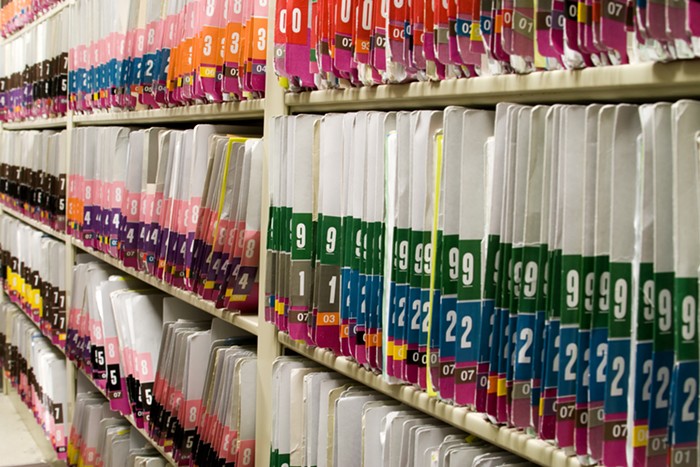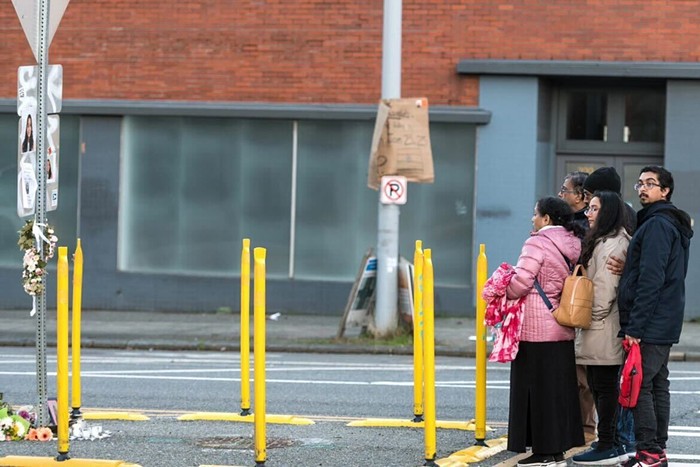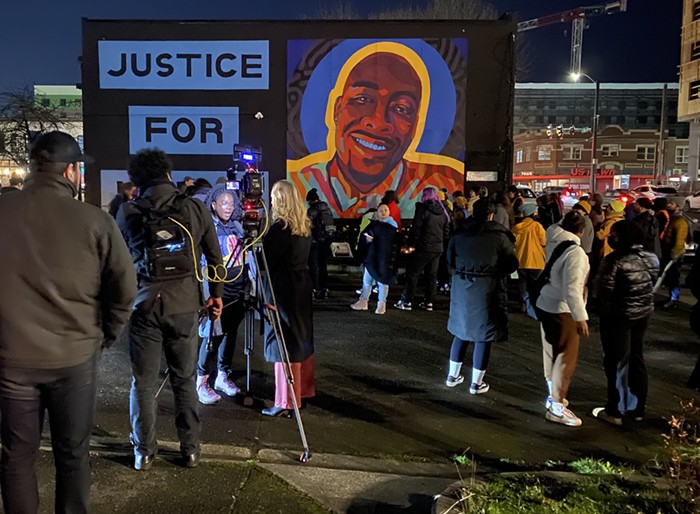According to a November report from the Seattle Center Century 21 Committee—which is tasked with revamping and rebuilding the Seattle Center—Fun Forest needs to go.
Noting declining revenues and flagging attendance at the dilapidated amusement park, Century 21 has recommended that the five-acre property "be replaced... with a mix of outdoor active and passive uses, geared to all ages."
If that recommendation sounds vague, it is. While Century 21 seems to know what it doesn't want—a financially insolvent, antiquated amusement park—the committee seems unsure what it does want. Of the four options the committee has put forth for the Center, some call for the demolition of the Fun Forest—whose lease ends in 2009—and some don't. The city has also been struggling to find a new home for the Center's SeaSk8 skatepark, which was demolished in January 2007.
Roller-coaster enthusiast John Sutherland—a former ski-school director, resort manager, and University of Washington administrator—has been trying for nearly 10 years to bring a new amusement park to the Northwest. In 1999, Sutherland worked on a $100 million theme-park development in Lakewood, which ultimately fell apart due to a disagreement over taxes on the park's construction. Now he wants to breathe new life into the Fun Forest by bringing in new rides, new crowds, and $18 million worth of private investment over the next two years. Sutherland—who once held a Guinness World Record for riding 40 roller coasters in 24 hours—has brought in a team of designers, merchandisers, and investors (mostly former Six Flags executives, he says) to completely rethink, or at least retool, Fun Forest. But while Sutherland and his group have been pushing on the city for over a year, Seattle's notoriously slow-going bureaucratic process has kept things from moving forward, and Sutherland is ready to pack it up and look for a new site for his amusement park.
Since Fun Forest first appeared at the 1962 World's Fair, the park has had its ups and downs. In the mid-1980s, Disney came in looking to redevelop the park, but the plan ultimately fell apart. Plans to move the park to an old Metro bus barn were batted around for a few years, again to no avail. And in 2006, a poll by the Center found that less than 3 percent of the Center's visitors "enjoyed" the Fun Forest. Finally, in December 2007, after Fun Forest's operator, the Aubin family, fell behind on its rent for the second year in a row, the Seattle City Council cut the cord.
Sutherland says he asked about picking up the lease, but was met with silence from Center and city officials. "All I needed was the letter and the nod from the city," he says. "I've not heard from the council or the mayor's office."
Sutherland's proposal—tentatively named "The Thrillway," a reference to the Fun Forest's original moniker, "The Gayway"—shares some similarities with the old Fun Forest. It would still be filled with rides with names like "Disko," "Discovery," "Mega Drop," and the "Spinning Wild Mouse," but Sutherland wants to take things a step further. Sutherland's vision for the park integrates the rides with the landscape. He says he envisions a "world-class roller coaster" that would circle the park, ultimately dropping down over the Center's monorail tracks as a way to incorporate the ride into the Center's landscape.
Sutherland's vision extends beyond the Fun Forest property. He believes that incorporating family areas and water features into the park—much like what the Century 21 Committee has discussed—will make the park more accessible and inviting. And he says he'd like to demolish the arcade pavilion near the Pacific Science Center and give it back to the Center to be used as green space. Sutherland also wants a skatepark smack in the middle of the Thrillway, with the hopes of drawing in more families. "[We want to] bring the locals back," he says. "The marketing budget we've put together is bigger than the [marketing] budget for the whole Center. Except for the skatepark, this [project would all be] at our expense."
Indeed, if Sutherland's project was approved, the park would be privately funded. The skatepark would still be funded by the city, but it seems unlikely that a park in the former Fun Forest area would cost nearly as much as the estimated $2.3 million needed for the city's preferred skatepark plan, which would require the demolition of one of the Center's pavilions. The cheaper location in Fun Forest also has the support of the Seattle Parks Department's Skate Park Advisory Committee, which has been involved in the current SeaSk8 relocation process. Skaters also support Sutherland's plan. "We are looking for the best site available, and the best site would include one that doesn't displace current users," says SPAC chair Ryan Barth. Additionally, Barth says, "[Sutherland] understood we were looking for 10,000 square feet [for the skatepark]. With that understanding, I think that spot would be better for the [skatepark]."
So far, the Center hasn't shown much interest in Sutherland's proposal. "There are so many different types of things that could go in that space," says Seattle Center director Robert Nellams. "The Century 21 Committee decided it was too soon... to re-create an amusement park there, although there may be an opportunity to preserve some rides." Nellams says that while he's seen "some good things" in Sutherland's proposal, a new amusement park at the Center may not make fiscal sense. Nellams points to the financial struggles of big companies like Disney and Six Flags as a possible indicator of the future of theme parks. "The reality is, we have to look at how people are using things," Nellams says. "Fun Forest is losing momentum. People are voting with their feet and their pocketbooks." ![]()



















